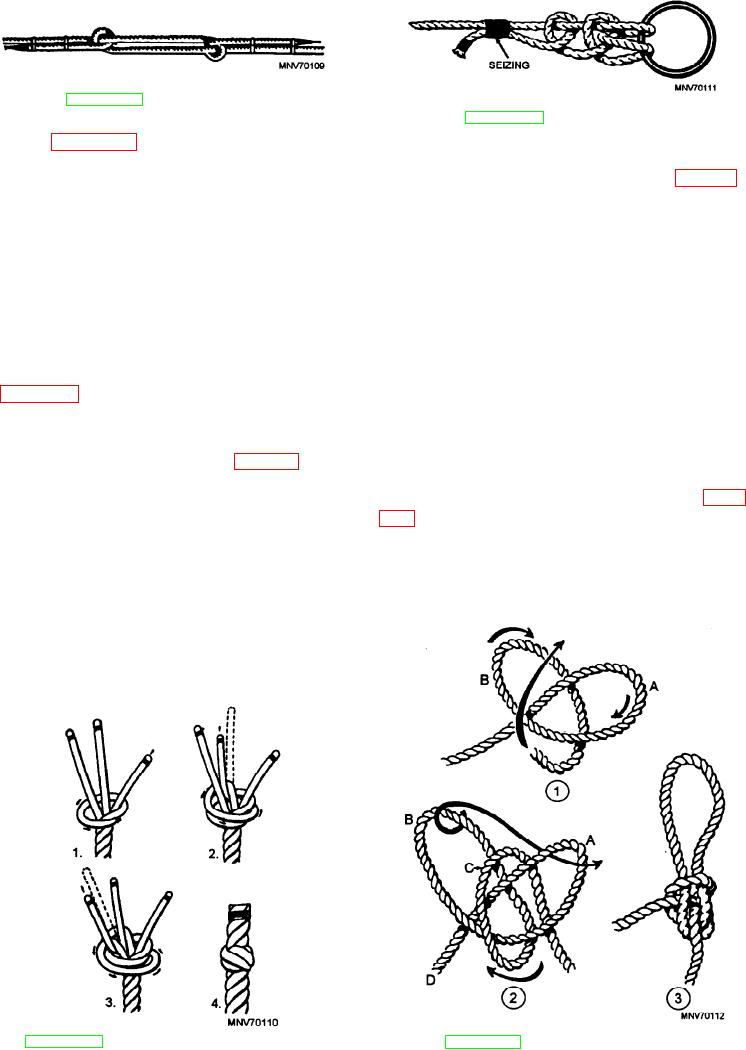
Figure 4-13.--Reeving line bend.
Figure 4-15.--Fisherman's bend.
shown in figure 4-13. As you can see, it consists of
through the eye. Tie a half hitch through the turns and
taking a half hitch with the end of each line around the
another half hitch around the standing part (fig. 4-15).
standing part of the other and seizing the bitter ends.
Make sure the seizings are tight; otherwise, the knot
Single Bowline on a Bight
might pull out.
The single bowline on a bight comes in handy
Double Matthew Walker
whenever you need an eye in the center of a line. It can
be tied quickly, does not jam tightly, and you do not
The double Matthew Walker has many uses in
need an end of the line to tie it. To get your securing lines
fancy work, but it also has practical applications, such
taut, use a single bowline on a bight for securing
as keeping the end of a line from coming unlaid. This
equipment or cargo.
use should be considered only a temporary measure,
because a proper whipping should be put on the line at
Tie the knot well up on the standing part and run the
the earliest opportunity and the knot cut off. Take a look
bitter end around a stanchion or through a pad eye and
at figure 4-14 before reading further.
back through the eye of the knot. Heave back on the
bitter end in a line between the knot and stanchion or
To tie a double Matthew Walker, unlay 6 or 8 inches
pad eye. This gives the same effect as having a block on
of line. Take the right strand, pass it around the other
the line at the knot and, discounting friction, doubles
two and up through itself (view 1 of fig. 4-14). Next,
your pull. Heave it taut and secure the end. To tie this
pass the center strand around the third, under the first,
knot, form bights A and B, as shown in view 1 of figure
and up through its own bight, as shown in view 2. Then
4-16. Next, lay part C between bights A and B, as shown
pass the last strand around and under the other two, and
in the second view. Then reach through bight A, over
up through its own bight (view 3). Tighten the knot by
part C, and pull bight B back through A. Tighten by
working out the slack and pulling tight. After tightening
pulling on part D and bight B. (The completed knot is
the knot, cut the ends off short or re-lay and whip them,
shown in view 3.)
as shown in view 4.
Fisherman's Bend
The fisherman's bend is a knot used to bend a line to
a becket or an eye. To tie it, simply take two turns
Figure 4-14.--Tying a double Matthew Walker.
Figure 4-16.--Single bowline on a bight.
4-16

